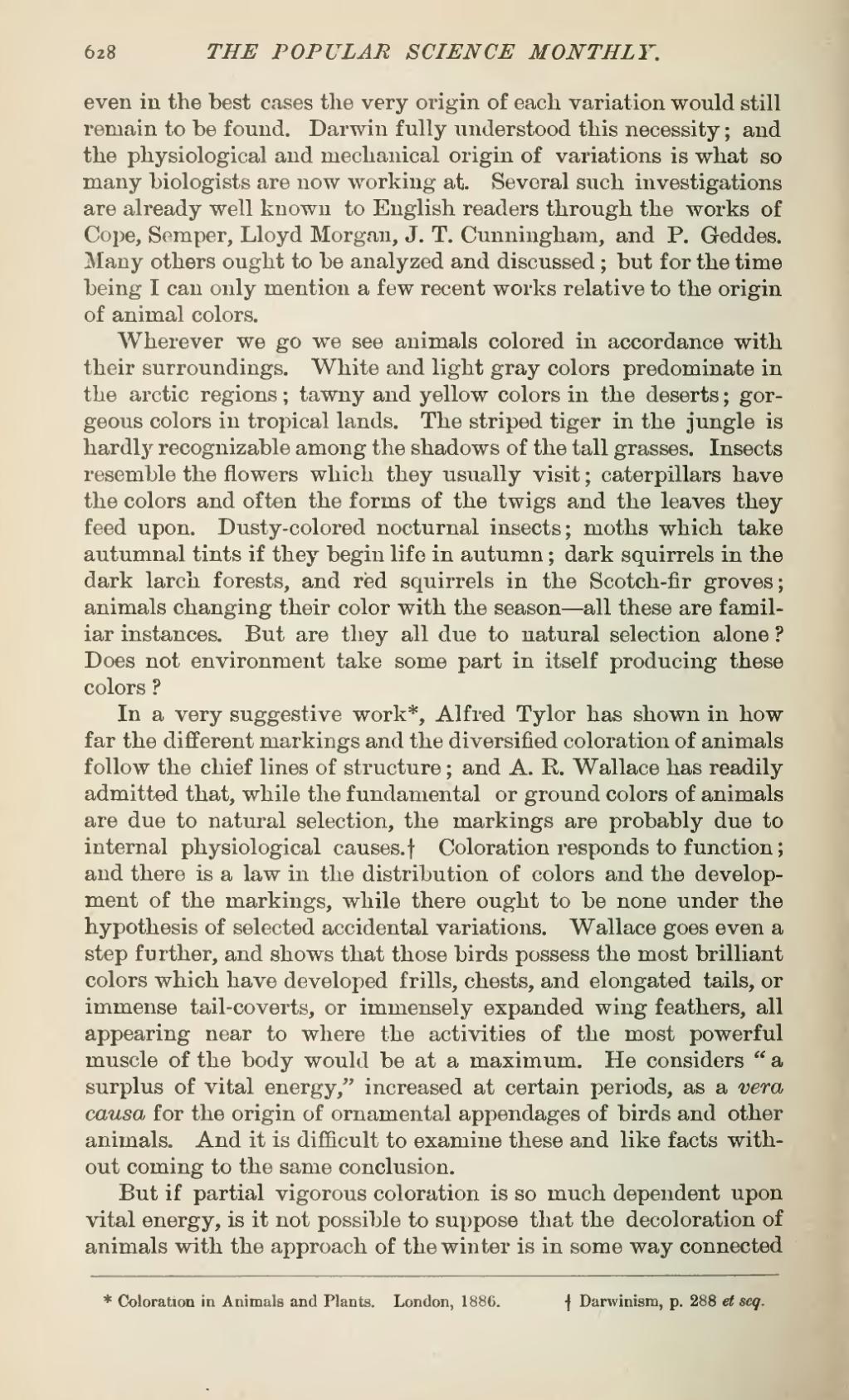even in the best cases the very origin of each variation would still remain to be found. Darwin fully understood this necessity; and the physiological and mechanical origin of variations is what so many biologists are now working at. Several such investigations are already well known to English readers through the works of Cope, Semper, Lloyd Morgan, J. T. Cunningham, and P. Geddes, Many others ought to be analyzed and discussed; but for the time being I can only mention a few recent works relative to the origin of animal colors.
Wherever we go we see animals colored in accordance with their surroundings. White and light gray colors predominate in the arctic regions; tawny and yellow colors in the deserts; gorgeous colors in tropical lands. The striped tiger in the jungle is hardly recognizable among the shadows of the tall grasses. Insects resemble the flowers which they usually visit; caterpillars have the colors and often the forms of the twigs and the leaves they feed upon. Dusty-colored nocturnal insects; moths which take autumnal tints if they begin life in autumn; dark squirrels in the dark larch forests, and red squirrels in the Scotch-fir groves; animals changing their color with the season—all these are familiar instances. But are they all due to natural selection alone? Does not environment take some part in itself producing these colors?
In a very suggestive work[1], Alfred Tylor has shown in how far the different markings and the diversified coloration of animals follow the chief lines of structure; and A. R. Wallace has readily admitted that, while the fundamental or ground colors of animals are due to natural selection, the markings are probably due to internal physiological causes.[2] Coloration responds to function; and there is a law in the distribution of colors and the development of the markings, while there ought to be none under the hypothesis of selected accidental variations. Wallace goes even a step further, and shows that those birds possess the most brilliant colors which have developed frills, chests, and elongated tails, or immense tail-coverts, or immensely expanded wing feathers, all appearing near to where the activities of the most powerful muscle of the body would be at a maximum. He considers "a surplus of vital energy," increased at certain periods, as a vera causa for the origin of ornamental appendages of birds and other animals. And it is difficult to examine these and like facts without coming to the same conclusion.
But if partial vigorous coloration is so much dependent upon vital energy, is it not possible to suppose that the decoloration of animals with the approach of the winter is in some way connected

